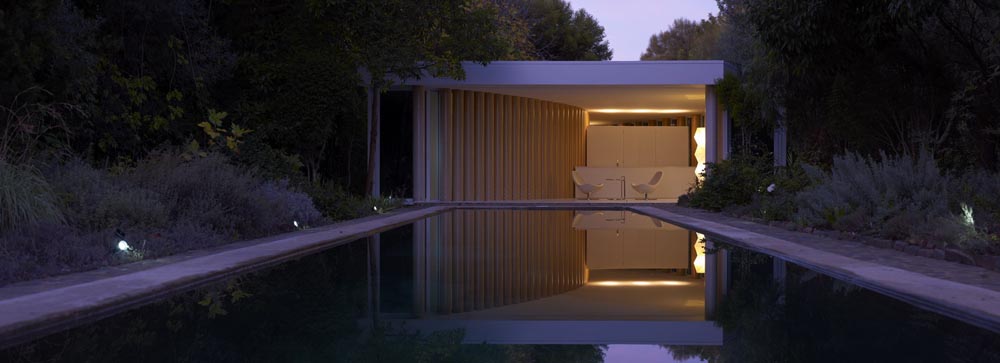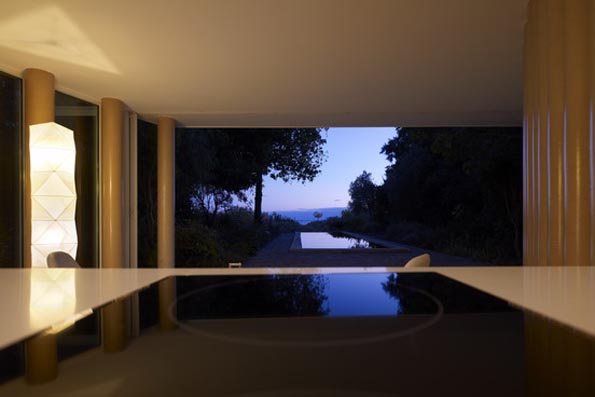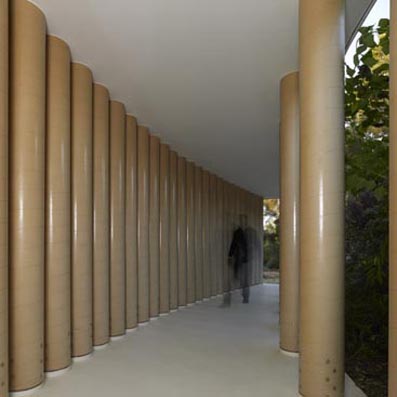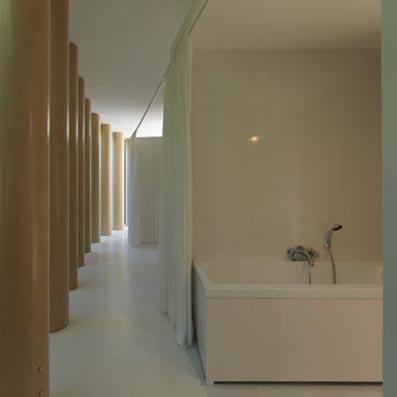Owned by an art and plant collector, Quinta Botanica overlooks the ocean from a cliff in Algarve, the southernmost region of Portugal. The structure acts as an artistic installation and temporary residence for visiting artists and botanists on the premises. Quinta Botanica is structurally identical to the Paper House (1995), the first permanent paper structure that was granted approval under Article 38 of the Japanese Building Standards Act. Wooden joints and paper tubes fixed with lag bolts comprise the foundation, creating a system capable of withstanding vertical loads and lateral force. To avoid cutting down already-existing trees, its plan was designed to weave through them in an S-shape.
1999年にデザインしたポルトガルの小さな家がやっと完成した.南ポルトガルの小さな村まるまるアルガーブに隣 接する,海に面した崖の上の4ヘクタールの敷地には,美術品収集家であり植物収集家であるオーナーが,世界中から集めた400点ほどの美術作品 と5,000種ほどの植物,そして約1万冊の関係図書がコレクションされている.ここに,アーティス
ティック・インスタレーションとして,たまに訪れる植物学者とアーティストのための仮の宿を設計した.構造的には,1995年に38条認定を取得して建てられた,初の恒久的紙管構造物「紙の家」と同じく,基礎は固定された木製ジョイントと紙管をラグスクリューで固定し,鉛直荷重と横力を負担させるシステムである.Sの字を描くプランは,重要な木を切らず,それらの隙間をすり抜けるように決められた.設計と施工に10年近くかかったのは,現地の建築家,構造家,そして工務店が,紙の構造の安全性を信用できず,しまいには引き受け手が見つからなかったためである.そのため施主が自ら部分発注をしながら長い歳月をかけて完成させた
|




